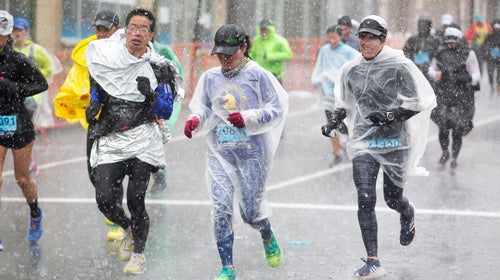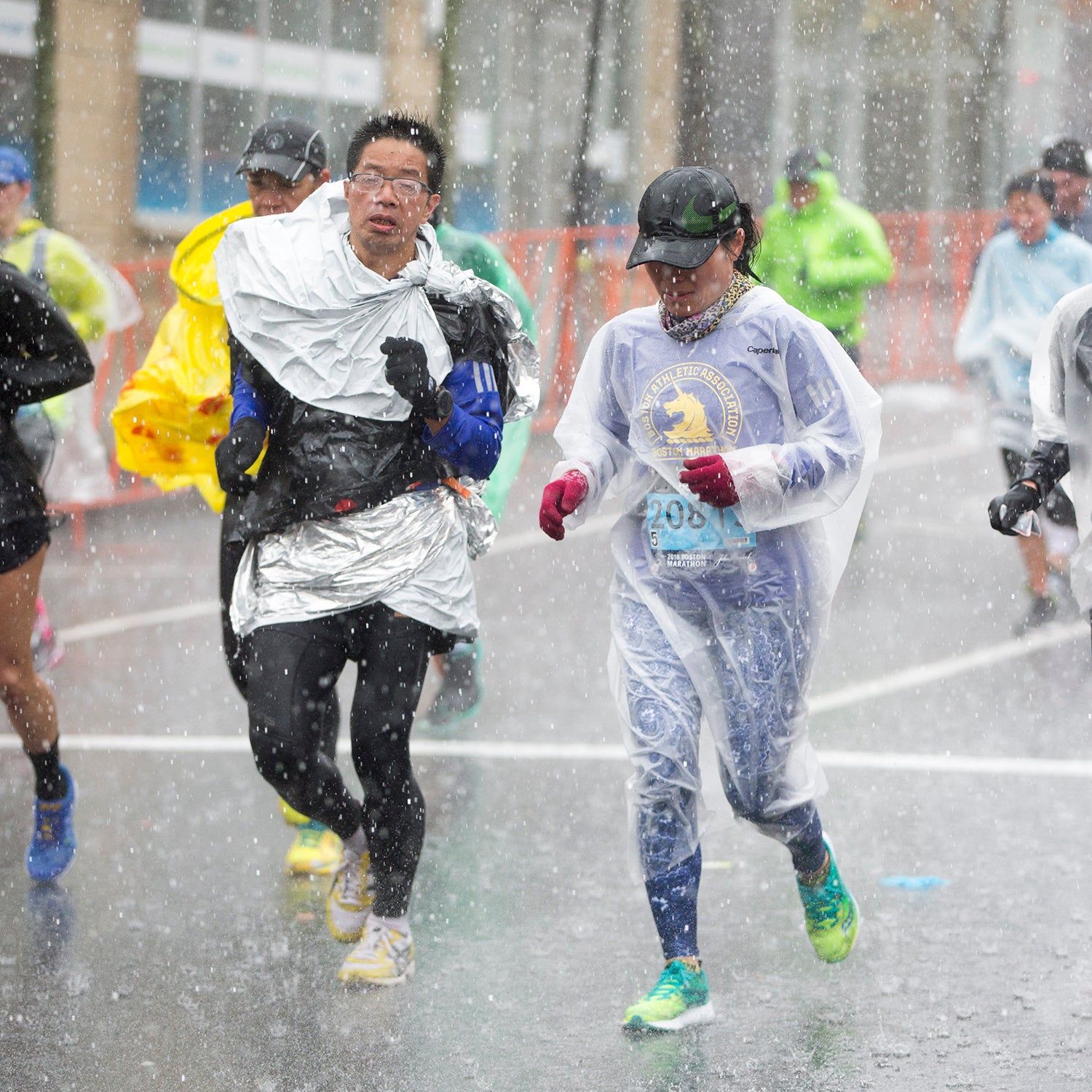A mix of╠řcold, rain, and wind is one of the most difficult times to be outside. Trying to run fast in these conditions is even more challenging.
More than 30,000╠řrunners learned this lesson firsthand╠řduring the 122nd Boston Marathon, which featured temperatures of around 40 degrees, an inch of soaking rain, and a consistent headwind of 10 to 20 miles per hour.
Like in any race, the results were still largely a function of natural talent, dedicated training, and mental tenacity. But one factor played an outsized role in these exceptional conditions: clothing selection. For many runners, their attire affected their times by minutes and sometimes made the difference between a triumphant finish or a DNF.
I, thankfully, did not race Boston this year, opting instead for the Houston Marathon in January, which had ideal weather╠řand where I PRed in 2:28:24. But IÔÇÖve experienced my fair share of crappy race-day weather, including subfreezing temperatures and snow at the Colorado Marathon, cold rain and high winds at 10,000 feet during the Bighorn 100 in Wyoming, slushy rain and wet snow on Col du Bonhumme during Ultra Trail du Mont Blanc,╠řand countless track and cross-country meets as a Bay State high schooler in conditions that mirrored those at Boston.
Over the years, IÔÇÖve honed my wet-weather race day kit. HereÔÇÖs what IÔÇÖve learned the hard way.
Dial In Your Prerace Game
Before a race, huddle in a warm, dry spot with as many disposable clothes on as possible. IÔÇÖm talking multiple layers of Goodwill-worthy clothes that you donÔÇÖt mind not recovering and a single-use poncho or emergency blanket. A garbage bag works, too.╠řDitch all or most of these items just before the start╠řor after the first few miles. Having disposable clothes is preferable to using a gear check (if one is offered), because you can hang onto disposable clothes for longer╠řinstead of needing to turn over everything 30 or 60 minutes prior to the race.
While waiting to cross the starting mat,╠řavoid becoming deeply cold (feeling like only a hot shower can warm you up) so that it doesnÔÇÖt take much longer than the standard ten-ish minutes of race pace to warm up. Deep cold is double-trouble: the body does not operate efficiently when itÔÇÖs cold, and it taps its energy stores simply to stay warm rather than saving them for the race.╠řIn addition to wearing extra layers, bring a bottle of hot tea╠řto the starting area.
Know Thy Body╠ř╠ř
If you were to ask a room of experienced runners, ÔÇťWhatÔÇÖs the best clothing for cold, wet, and windy conditions?,ÔÇŁ you probably wonÔÇÖt get a single answer, as demonstrated in . Everyone has their own gear preferences, based on╠řgender,╠řbody composition, athletic background, seasonal acclimation, personal budget, and more.
As an example, the menÔÇÖs winner at Boston, Yuki Kawauchi, wore a ball cap, singlet, arm sleeves, glove liners, and split shorts from the gun. But this setup failed professional runner╠řSage Canaday, who DNFed around mile 18 because he ÔÇť.ÔÇŁ
Experimenting with different options in wide-ranging weather conditions is the best way to learn what works for you. The next time you get an unfavorable forecast for an important workout, donÔÇÖt reschedule. Instead╠řadjust your expectations, get it done, and take notes afterward about what worked and what didnÔÇÖt.
Understand Fibers and Fabrics
Because personal preference╠řis such large factor in determining what works best for you, the material the product is made out of is far more important than a specific brand or product model. For insulating layers, you really have two options: polyester and wool.
Polyester manages moisture best by wicking water away from the skin and drying quickly. The fibers donÔÇÖt absorb water.╠řHowever, water molecules do get trapped between the fibers and so, when wet, polyester is chilly.
Merino wool does not dry as quickly as polyester and it absorbs more water, but it insulates better when wet. Unless you pee on yourself, wool is not warm when wet (trust me), but it is╠řless chilling than polyester.
Waterproof-breathable fabrics like Gore-Tex are a last resort for running in cold and wet conditions. While they are the most water-resistant of the options listed here, they are the least breathable and will be overwhelmed by perspiration if not supplemented by direct venting. The running market is underserved by this category. Most waterproof-breathable shells are made of stiff fabrics and are too heavy and loose-fitting, although there is a growing list of exceptions, like the ╠řjacket.


